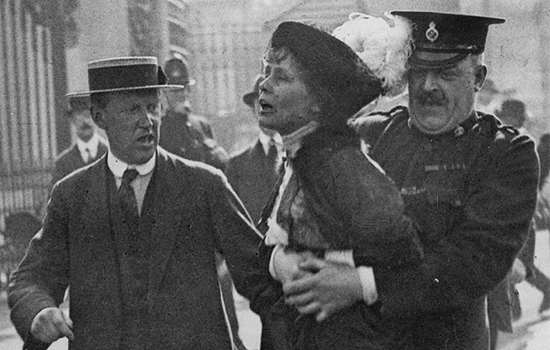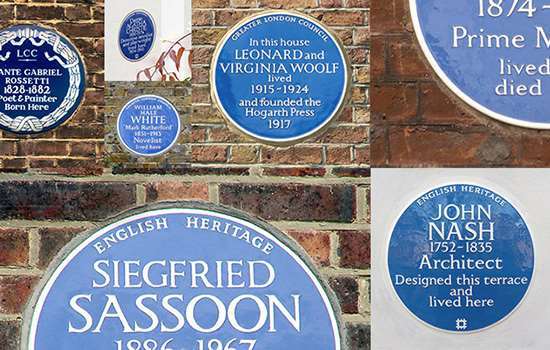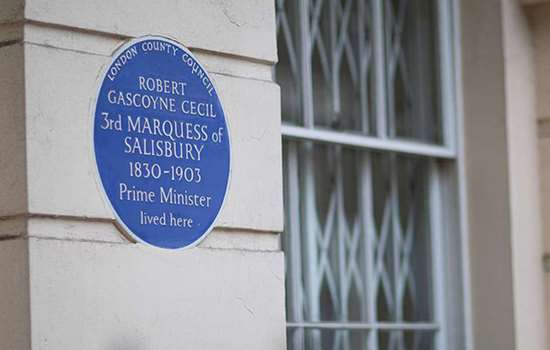Wadia, Ardaseer Cursetjee (1808–1877)
Plaque erected in 2021 by English Heritage at 55 Sheen Road, London, TW9 1YH, London Borough of Richmond Upon Thames
All images © English Heritage
Profession
Civil engineer
Category
Engineering and Transport
Inscription
ARDASEER CURSETJEE WADIA 1808–1877 Civil Engineer lived here from 1868
Material
Ceramic
A pioneer in the field of civil engineering, Ardaseer Cursetjee Wadia was the first South Asian to be elected a Fellow of the Royal Society. He was a member of the Wadia shipbuilding family, who were prominent in the city of Bombay (now Mumbai). A blue plaque marks the impressive villa in Richmond upon Thames where he and his British family lived for the last ten years of his life.
Early career
Ardaseer Cursetjee was born in Bombay in 1808, the only surviving child of Cursetjee Rustomjee, Assistant Builder in the East India Company’s Bombay dockyard, and Jerbai Cawasjee Bomanjee Kabrajee. He followed his father and uncle into East India Company service in 1822, at the age of 14, training as a naval architect in the government shipyard. Shipbuilding was a family occupation of this prominent Indian Parsi family, and dated from at least the early 18th century. Ardaseer married his distant cousin Awahbai Nowrowee in 1827, and the couple had two sons and two daughters.
In 1828 Ardaseer was put in charge of the shipyard at the British fort of Mazagaon, where he designed and supervised the building of several vessels. But he was more interested in steam engines than shipbuilding. In 1831 he was granted permission to work at the Bombay Mint, and during his time there he created a small one horsepower steam engine – the first to be built in Bombay – through which to demonstrate to fellow Indians the ‘nature and properties of steam’. He then had a ‘marine steam engine’ constructed in England, which was installed in one of his own ships, the Indus, in 1833. That year he was made Assistant Builder at Mazagaon.
In 1834, aged 26, Ardaseer introduced gaslight to Bombay when he lit his own house and garden by gas, creating a gasworks for the purpose. Many visitors came to witness the spectacle, including the Governor of Bombay.
First London visit
In 1839 Ardaseer travelled to England, after being granted permission to travel there to study steam machinery. He spent a year in London, working with John and Samuel Seaward, who were early advocates of auxiliary steam power on ships. His enthusiasm and skill led to patronage by the British: he was elected an Associate of the Institution of Civil Engineering in March 1840, gave evidence to the House of Commons on the ‘opium question’ in June, and was presented to Queen Victoria and Prince Albert.
He returned to India in November 1840, having been made chief engineer and inspector of machinery at the East India Company’s Bombay Steam Factory. In May 1841 he also took charge of the steam branch of the Indian Navy – the first native of India to be placed above Europeans. The same month he was elected a Fellow of the Royal Society in London.
England and Bombay
In September 1851 Ardaseer left India for a second visit to England, again to survey improvements in machinery. He travelled via the United States, where he was said to be the first Parsi to have visited that country. Arriving back in India early in 1853, he continued to work for the East India Company until 1857.
During this time, in 1853 and 1856, he had two children, both born in Bombay, with Marian Barber. Ardaseer and Marian probably met while he was staying in London. Although he remained legally married to his wife in Bombay, he lived with Marian for the rest of his life, providing for both families in his will. Marian gave birth to a third child in 1859 in London.
For a time after his retirement from the East India Company, Ardaseer Cursetjee worked as chief engineer of the Indus Flotilla Company in Karachi, and travelled back and forth between England and Bombay.
Richmond retirement
In 1868 he returned to London permanently, and spent the last ten years of his life there. From this time he, Marian and their children settled at 55 Sheen Road, Richmond, then known as Lowjee House, Marsh Gate.
Lowjee House was the largest of three substantial detached villas erected by the same builder in the mid 1860s. It is not known if Ardaseer Cursetjee was the first resident of the house when he retired there in 1868, but he evidently gave it the family name, Lowjee. The house had three reception rooms and seven bedrooms, while outside there was stabling for two horses, as well as a two-storey coach house, a conservatory and a large garden with a summer house and fountain.
During his retirement Ardaseer Cursetjee became the first senior trustee of what is now the Zoroastrian Trust Funds of Europe, the European body for Parsis. In 1873 he led a party of Bombay Parsis to Buckingham Palace, to present a letter to the Shah of Persia protesting against religious persecution in the country.
Ardaseer Cursetjee died suddenly at home on 16 November 1877, aged 69. In 1969 the Indian Postal Service issued a stamp commemorating him, which bears his portrait against a background of the Bombay docks.
For most of his life, he used the name Ardaseer Cursetjee (Ardaseer son of Cursetjee), in the usual Parsi patronymic naming style. From about the 1870s, however, the family adopted the surname Wadia, a derivation of the word for shipbuilder, in line with Parsi practice of taking as a surname the name of an illustrious ancestor or traditional family vocation. As Ardaseer Cursetjee used the name Wadia in his will, the plaque inscription includes it, to acknowledge his association with the long-established shipbuilding family.
Nearby Blue Plaques
More About Blue Plaques



